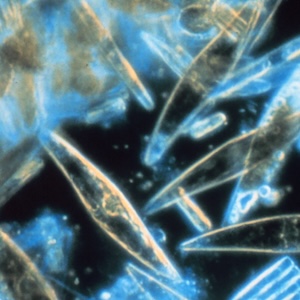A procedure to update quality indices based on species abundances: an example using the EPI-L diatom index

Submitted: 26 July 2023
Accepted: 27 October 2023
Published: 20 November 2023
Accepted: 27 October 2023
Abstract Views: 983
PDF: 200
Supplementary Tab. S1: 58
Supplementary Tab. S2: 60
HTML: 7
Supplementary Tab. S1: 58
Supplementary Tab. S2: 60
HTML: 7
Publisher's note
All claims expressed in this article are solely those of the authors and do not necessarily represent those of their affiliated organizations, or those of the publisher, the editors and the reviewers. Any product that may be evaluated in this article or claim that may be made by its manufacturer is not guaranteed or endorsed by the publisher.
All claims expressed in this article are solely those of the authors and do not necessarily represent those of their affiliated organizations, or those of the publisher, the editors and the reviewers. Any product that may be evaluated in this article or claim that may be made by its manufacturer is not guaranteed or endorsed by the publisher.
Similar Articles
- Angela Boggero, Michela Rogora, Silvia Quadroni, Effects of water level management on lake littorals and downstream river areas , Journal of Limnology: Vol. 81 No. s2 (2022): Effects of water level management on lake littorals and downstream river areas
- Cristiana Callieri, Edoardo Mandolini, Roberto Bertoni, Rosaria Lauceri, Antonio Picazo, Antonio Camacho, Pedro Jose Cabello-Yeves, Atlas of picocyanobacteria monoclonal strains from the collection of CNR-IRSA, Italy , Journal of Limnology: Vol. 80 No. 1 (2021)
- Shipei Dong, Zhuolun Li, Qiujie Chen, Zhiqiao Wei, Total organic carbon and its environmental significance for the surface sediments in groundwater recharged lakes from the Badain Jaran Desert, northwest China , Journal of Limnology: Vol. 77 No. 1 (2018)
- Hans van Haren, Sebastiano Piccolroaz, Marina Amadori, Marco Toffolon, Henk A. Dijkstra, Moored observations of turbulent mixing events in deep Lake Garda, Italy , Journal of Limnology: Vol. 80 No. 1 (2021)
- Gianluca Polgar, Mattia Iaia, Tsung Fei Khang, Pietro Volta, Gross mismatches between salmonid stocking and capture record data in a large Alpine lake basin in Northern Italy suggest a low stocking effectiveness for an endangered native trout , Journal of Limnology: Vol. 82 (2023)
- Nadezhda M. Yavorskaya, Marina A. Makarchenko, Oksana V. Orel, Eugenyi A. Makarchenko, An updated checklist of Chironomidae (Diptera) from the Amur River basin (Russian Far East) , Journal of Limnology: Vol. 77 No. s1 (2018): Recent advances in the study of Chironomidae: An overview
- Hajar Taherisoudejani, Erica Racchetti, Fulvio Celico, Marco Bartoli, Application of QUAL2Kw to the Oglio River (Northern Italy) to assess diffuse N pollution via river-groundwater interaction , Journal of Limnology: Vol. 77 No. 3 (2018)
- Bartosz Czernecki, Mariusz Ptak, The impact of global warming on lake surface water temperature in Poland - the application of empirical-statistical downscaling, 1971-2100 , Journal of Limnology: Vol. 77 No. 2 (2018)
- Airan dos Santos Protázio, Arielson dos Santos Protázio, Vivian Gama, Samantha Vieira Silva, Carla Giovanna Cruz dos Santos, Joanna Karine Gomes de Oliveira, Diet of tadpoles for five anuran species of northeast Brazil , Journal of Limnology: Vol. 79 No. 2 (2020)
- Mehrshad Foroughan, Ulrich Lemmin, David Andrew Barry, Effects of natural surfactants on the spatial variability of surface water temperature under intermittent light winds on Lake Geneva , Journal of Limnology: Vol. 81 (2022)
<< < 41 42 43 44 45 46 47 48 49 50 > >>
You may also start an advanced similarity search for this article.

 https://doi.org/10.4081/jlimnol.2023.2151
https://doi.org/10.4081/jlimnol.2023.2151





